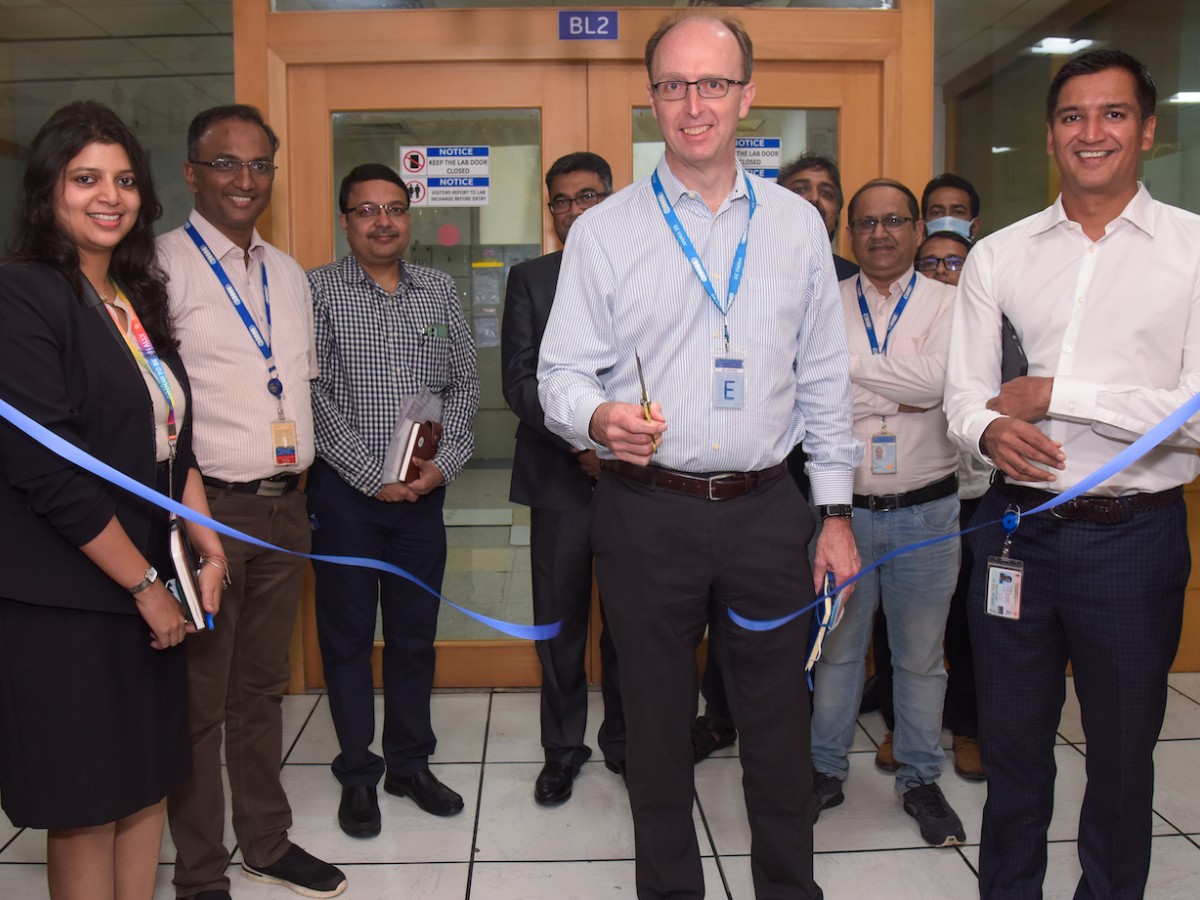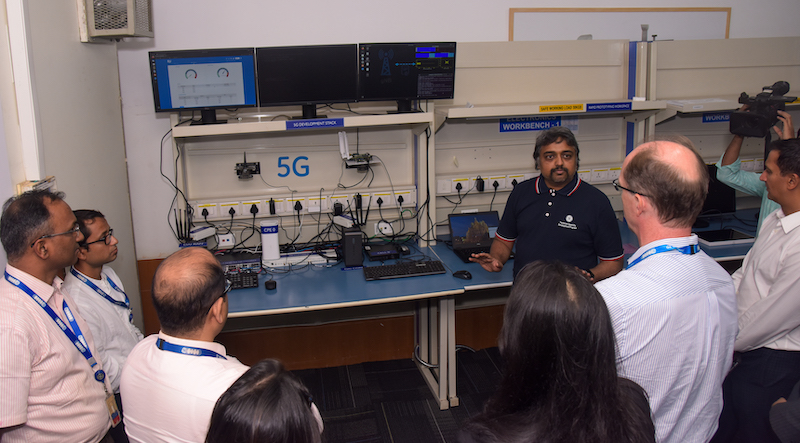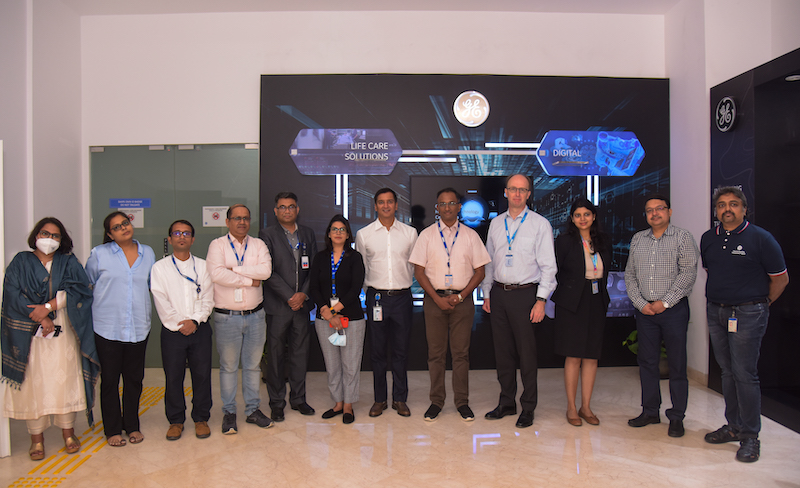Imagine if a critically ill patient’s electronic medical records could reach the hospital more swiftly than the ambulance they’re riding in. And that those electronic records could follow them through a hospital stay to telehealth check-ins with doctors, who could use remote monitoring devices to keep tabs on the patient’s vital signs while they recuperated at home. This and more may be increasingly possible as 5G — wireless cellular technology that promises speedier internet connections — expands globally.
“5G puts the patient at the center of the ecosystem, allowing them to benefit from the expertise of specialists located anywhere, not just at their location, so it becomes very patient-centric versus clinician-centric,” says Girish Raghavan, vice president of engineering for GE Healthcare in Bengaluru, India. “I think that’s the big shift we’re going to see with 5G.”
In July, GE Healthcare unveiled its 5G Innovation Lab at the John F. Welch Technology Centre in Bengaluru, the company’s largest research-and-development center outside of the U.S. It’s GE Healthcare’s first such lab, with its own private 5G network where researchers are working to create solutions that will expand patients’ access to care by employing 5G-enabled healthcare solutions like artificial intelligence, augmented and virtual reality, teleradiology and more. The lab is accessible to all GE Healthcare researchers and scientists worldwide, for research, training or validation purposes. It will allow them to explore solutions and validate hypotheses, building on other research.
“I don’t think many countries have got 5G yet, so we are starting the work ahead of time so that we are ready when the time comes,” Raghavan says.
Right now, the countries boasting the most cities with 5G availability are China and the U.S.[1] With time, 5G should become more available globally.[2]
Touring the new 5G Innovation Lab. Top: Jan Makela, president and CEO of imaging at GE Healthcare (center), cuts the ribbon to open the 5G Innovation Lab. Second from left: Girish Raghavan, vice president of engineering for GE Healthcare.
Making Healthcare More Inclusive for Patients
Once 5G coverage expands worldwide, people living in rural and suburban locations should be able to secure healthcare solutions, treatments and technologies that have been unattainable without long-distance travel. The technology would allow physicians to have virtual visits with patients living in remote areas.
“Most of the patients have to come to a big city for very complex procedures or consultations,” Raghavan explains, “but with 5G coming into place, they’re going to get the physician going to the patient wherever they are because of the 5G infrastructure.”
Because 5G is 100 times faster than 4G — with highly reliable connectivity, massive bandwidth, high data speeds and low latency — hospitals and clinics will be able to transfer data-rich radiology images, high-definition videos and medical records quickly, enabling doctors in top-tier institutions to view the data and communicate via video or telehealth call, in real time, with doctors or patients a great distance away.
“You could have an expert clinician in a different geography who can access patient records and provide consultation,” Raghavan says. “With this enhanced infrastructure, we are going to see new healthcare delivery models in the healthcare marketplace.”
5G is expected to especially improve the quality of healthcare in remote areas, where access to specialists and academic centers is limited. Enabling physicians in remote locations to share files and conversations with top specialists elsewhere may allow them to find cutting-edge solutions for their patients.
Creating 5G Solutions to Benefit Doctors, Scientists and Researchers
The same 5G assets that will allow for better-quality patient care may be leveraged to enable medical students, surgeons and other physicians to attend virtual trainings to gain crucial experience through technology like 5G-powered augmented and virtual reality. “If you have a specialist,” for example, who “wants to train 100 technologists across the country on a new advanced CT feature, he can do so in a remote setup over 5G very effectively,” Raghavan says. “This is something which they would have to be in person for otherwise.”
5G may also help surgeons in remote areas become proficient in new techniques, such as robotic surgery. Raghavan describes how they are teaching doctors in one location to direct surgeries live in another location over the internet.
The full scope of developments that arise from the 5G Innovation Lab remains to be seen, but the potential is there to improve patients’ care and physicians’ skills and knowledge.
“We have a very solid road map,” Raghavan says. “We have to leverage the road map, and we have to take it forward.”
REFERENCES
[1] “Number of Cities in Which 5G Is Available 2022 by Country,” Statista, last updated August 11, 2022, https://www.statista.com/statistics/1215456/5g-cities-by-country/.
[2] Katharina Buchholz, “Where 5G Technology Has Been Deployed,” Statista, July 27, 2022, https://www.statista.com/chart/23194/5g-networks-deployment-world-map/.



